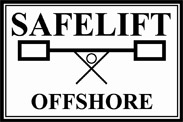 |
|
|
Home » Legislation
|
||

Provision and Use of Work Equipment Regulations 1998Introduction This guide provides information about the legal requirements of the Provision and Use of Work Equipment Regulations 1998 (PUWER) which came into force on 5 December 1998. It gives a general indication of some of the main requirements of the Regulations. However, it is important that you refer to the Regulations and accompanying Approved Code of Practice to familiarise yourself fully with your duties. What is PUWER? PUWER replaces the Provision and Use of Work Equipment Regulations 1992
and carries forward these existing requirements with a few changes
and additions, for example the inspection of work equipment and specific
new requirements for mobile work equipment. Many aspects of PUWER
should therefore be familiar to you. The Regulations require risks to
people’s health and safety, from equipment that they use at work, to
be
prevented or controlled. In addition to the requirements of PUWER, lifting
equipment is also subject to the requirements of the Lifting Operations What does PUWER do? In general terms, the Regulations require that equipment provided for use at work is:
What equipment is covered by the Regulations? Generally, any equipment which is used by an employee at work is covered, for example hammers, knives, ladders, drilling machines, power presses, circular saws, photocopiers, lifting equipment (including lifts), dumper trucks and motor vehicles. Similarly, if you allow employees to provide their own equipment, it too will be covered by PUWER and you will need to make sure it complies. Work equipment must meet all the requirements of the Regulations from 5 December 1998. However, requirements relating to certain aspects of mobile work equipment (see below) do not apply to such equipment (provided for use in the business before 5 December 1998) until 5 December 2002. HSE information sheet MISC156 should be read if you use hired mobile work equipment, see Further information. Examples of uses of equipment which are covered by the Regulations include
starting or stopping the equipment, repairing, modifying, maintaining, Do the Regulations apply to me? If you are an employer or self-employed person and you provide equipment
for use at work, or if you have control of the use of equipment, then
the While your employees do not have duties under PUWER, they do have general duties under the HSW Act and the Management of Health and Safety at Work Regulations 1999 (MHSWR), for example to take reasonable care of themselves and others who may be affected by their actions, and to co-operate with others. The Regulations cover places where the HSW Act applies - these include factories, offshore installations, offices, shops, hospitals, hotels, places of entertainment etc. PUWER also applies in common parts of shared buildings and temporary places of work such as construction sites. While the Regulations cover equipment used by people working from home, they do not apply to domestic work in a private household. What do the Regulations require me to do? You must ensure that the work equipment you provide meets the requirements of PUWER. In doing so, you should ensure that it is:
You need to ensure that people using work equipment have received adequate
training, instruction and information for the particular Mobile work equipment In addition to these general requirements which apply to all work equipment,
Part III of PUWER contains specific duties regarding mobile work How are the Regulations enforced? Health and safety inspectors enforce the Regulations. If you have duties
under PUWER you will be given time to assimilate the requirements which
|
| Copyright © 2011 Safelift Offshore. All rights reserved. | Sitemap | Google+ |
| Web design, development and hosting by MTC
Media Ltd. |
|





